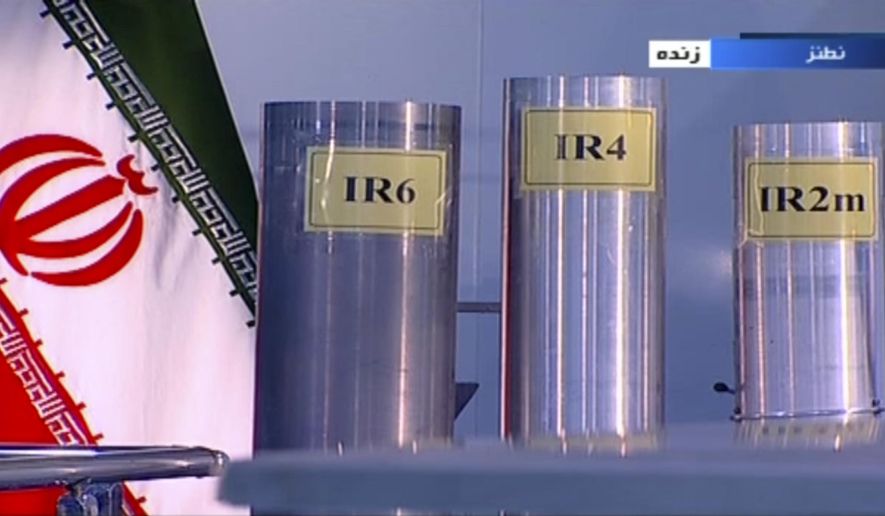OPINION:
I remember standing in a market outside a Chinese temple in Penang, Malaysia, when I was 14, watching an old Chinese man run a magnificent shell game. Over the course of the time I watched, he convinced a whole host of individuals, including my father who was no gambling man, that they could guess where the marble was that he was concealing under one of three cups. No one was able to do so. He was too fast. He was a master of sleight of hand.
The shell game in Penang was a long time ago. If you want to see the modern-day masters of the shell game you probably should look in Pyongyang and Tehran, and to understand why you should consider for a moment the case of Kim Jong-un‘s limousines.
A recent report by the Center for Advanced Defense Studies (C4ADS) and The New York Times indicates that North Korean dictator Kim Jong-un recently took possession of two top of the line Mercedes-Maybach S600 limousines. The vehicles, the world’s finest luxury vehicles, should never have been able to make it through sanctions and find their way to the Hermit Kingdom, yet recent photos of Mr. Kim show him riding in style in these world-class sedans.
“High-end luxury goods share key features with dual-use goods for North Korea’s weapons program: they are scarce, specialized products with high monetary value and great symbolic importance for the Kim regime,” the executive summary for C4ADS’ report, titled explains. The similarity does not end with their value to the Kim regime. These vehicles made it to North Korea via precisely the kind of sanctions busting smuggling networks that both North Korea and Iran use to contain to obtain and sell critical items.
According to C4ADS, in June 2018, the cars arrived at the Port of Rotterdam in the Netherlands. A Dutch freight forwarding company, Slavenburg & Huyser B.V., then put them on a ship to Dailan, China. After arriving at the Chinese port, a Japanese trading company, Zuisyo Co., signed for the containers and had them shipped to Osaka, Japan.
In Japan, another freight forwarding company called Mino Logistics Japan sent the containers to Busan, South Korea, where South Korean firm Mino Logistics Co. signed for them. The cars were then loaded onto a Togo-flagged cargo ship. That ship subsequently set sail for Nakhodka, Russia. Once at sea, the vessel turned off its transponder and remained “invisible” to maritime tracking systems for 18 days. When the ship did “reappear,” it was on its way back to Busan. No records exist of it having docked in Nakhodka.
During the timeframe in question, however, three North Korean IL-76 cargo aircraft did make a surprise trip to Vladivostok in Russia, which is only a few hours’ drive from Nakhodka. It was the first time any of the aircraft had flown in several months. It is likely via these aircraft that the vehicles and any supporting equipment and parts were flown to Pyongyang. In February 2019, South Korean authorities seized the cargo ship involved in this movement as part of an investigation into North Korean violations of international sanctions.
There is nothing really particularly unique about this case. It is merely an illustration of the robust, complex, worldwide nature of North Korean smuggling networks. The Iranians maintain their own such networks as well, and they are every bit as intricate and effective.
Now let’s consider the shell game.
Tehran is making noises about restarting all sorts of aspects of its nuclear program. Everyone from Washington to Tel Aviv is hastening to calculate how quickly the Iranians might be able to enrich sufficient uranium for nuclear weapons and then incorporate that uranium into a functioning device. Satellites are tracking movement around known enrichment facilities, and diplomats are hanging on every new Iranian official announcement.
Meanwhile, while everyone is distracted and watching the wrong cup we may be ignoring some very obvious and very disturbing factors.
The Iranians already have a very robust and very advanced ballistic-missile program capable of carrying nuclear weapons. It is operational and tested. All they need is a functioning weapon to pair with it.
The North Koreans already have nuclear weapons and are reportedly building more. According to The Wall Street Journal, in fact, the North Koreans may have added a dozen new atomic bombs to their arsenal within the last year.
The Iranians and the North Koreans have a long-standing liaison, and there have been reports for years of Iranians in North Korea observing nuclear tests as they took place.
As in the case of the Mercedes limousines outlined above, both the Iranians and the North Koreans have the capacity to move items of large size in violation of sanctions and without being detected.
What all this means is that while we are all obsessed with Iranian efforts to build from scratch their own nuclear weapons we may completely misunderstand their intentions. They may simply purchase from the North Koreans a handful of nuclear weapons, bring them to Iran, mate them with existing ballistic missile systems and go virtually overnight from wanting nuclear weapons to being a full-fledged nuclear power capable of destroying Tel Aviv, Riyadh and a host of other capitals.
Decades ago in that market in Malaysia I watched my father lose the equivalent of $20 in a shell game. We may be on the brink of losing much, much more in this one.
• Charles (Sam) Faddis is a retired CIA operations officer and former U.S. Army officer. He writes regularly on national security matters and also appears regularly on television and radio.




Please read our comment policy before commenting.